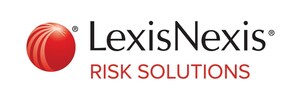ATLANTA, Feb. 15, 2022 /PRNewswire/ -- LexisNexis® Risk Solutions released its latest Small and Midsize Business (SMB) Lending Fraud Study. The survey of risk and fraud executives at financial institutions reveals that SMB lending fraud in the United States has increased 6.9% since 2020. SMB lending fraud losses account for a significantly higher percent of financial firms' annual revenues year-over-year at an 6.2% increase overall, with larger banks with more than $10 billion in revenue and fintechs/digital lenders seeing the sharpest year-over-year increase.
Key Findings on SMB Lending Fraud
- Labor-Focused Spending Increased: More fraud prevention costs have involved labor compared to early 2020, as lending faced increased loan requests because of the Paycheck Protection Program and battled more fraud related to counterfeit business credentials and fake or stolen consumer identities associated with businesses applying for loans.
- Increase in Mobile Channels: Online and mobile channels continue to represent the largest share of lending origination transactions. Mobile channel fraud losses have increased 10% or more, particularly among fintechs and larger banks.
- Layering Solutions Lessens Cost: Lenders that layer more advanced identity authentication with advanced transaction/identity verification solutions experienced a lower rate of increased fraud overall and the pandemic had less of a fraud impact on these institutions.
"The digital channel environment is upon us and continues to grow as customers and prospects expect digital lending options, particularly during times that make in-person transactions more challenging," said Tom Hunt, director of business risk strategy, LexisNexis Risk Solutions. "At the same time, fraud is evolving and has become more complex for lenders. Various risks can occur simultaneously with no single solution to solve for all of them. To be effective, fraud tools now need to authenticate both digital and physical criteria simultaneous with identity and transaction risk."
The results of the survey illustrate the deep impact that the pandemic had on lending, contributing largely – more than one-third – to the increased costs associated with SMB lending fraud. Respondents indicated that the pandemic negatively impacted them through both increased fraud and more complexity in fraudster methodology than before. Stolen legitimate business and consumer identities and the use of synthetic consumer identities make it incredibly difficult for lenders to distinguish between legitimate and fraudulent loan requests.
The pandemic forced many lenders to make changes to their fraud detection and mitigation approaches, particularly among fintechs and larger banks, leading to higher labor costs. However, though those processing a sizeable volume of loans through digital channels indicate an even larger pandemic-related cost increase, fintechs and larger banks appear to be following best practices of integrating the digital/customer experience within their fraud prevention solutions.
Continues Hunt, "The impact of the pandemic on costs associated with lending fraud is clear, although there is no one-size-fits-all model to solve for SMB fraud. When employing a layered solution approach, lending firms with digital channel business models should implement solutions for their unique channel issues and fraud. One of the best fraud prevention approaches involves a layering of different solutions to address unique risks from different channels, payment methods and products. This approach also allows lenders to integrate additional capabilities and operations more easily within their fraud prevention efforts."
Methodology
The study surveyed 149 individuals working at banks, credit unions, fintech/digital lenders and payment processors with responsibility for risk and fraud assessments or decisions for SMB customers. SMBs are businesses earning up to $10 million annually. The study set out to better understand SMB lending fraud, specifically its volume, how institutions identify and track fraud, the types of fraud experienced, what institutions are doing to combat fraud and whether there are differences in SMB lending fraud based on the size or type of organization. Global market research firm KS&R collected respondent data by phone during August and September 2021.
Download the 2021 LexisNexis Risk Solutions Small and Mid-Sized Business (SMB) Lending Fraud Study.
About LexisNexis Risk Solutions
LexisNexis® Risk Solutions harnesses the power of data and advanced analytics to provide insights that help businesses and governmental entities reduce risk and improve decisions to benefit people around the globe. We provide data and technology solutions for a wide range of industries including insurance, financial services, healthcare and government. Headquartered in metro Atlanta, Georgia, we have offices throughout the world and are part of RELX (LSE: REL/NYSE: RELX), a global provider of information-based analytics and decision tools for professional and business customers. For more information, please visit www.lexisnexisrisk.com and www.relx.com.
Media Contact:
Marcy Theobald
678.232.0948
[email protected]
SOURCE LexisNexis Risk Solutions

WANT YOUR COMPANY'S NEWS FEATURED ON PRNEWSWIRE.COM?
Newsrooms &
Influencers
Digital Media
Outlets
Journalists
Opted In





Share this article